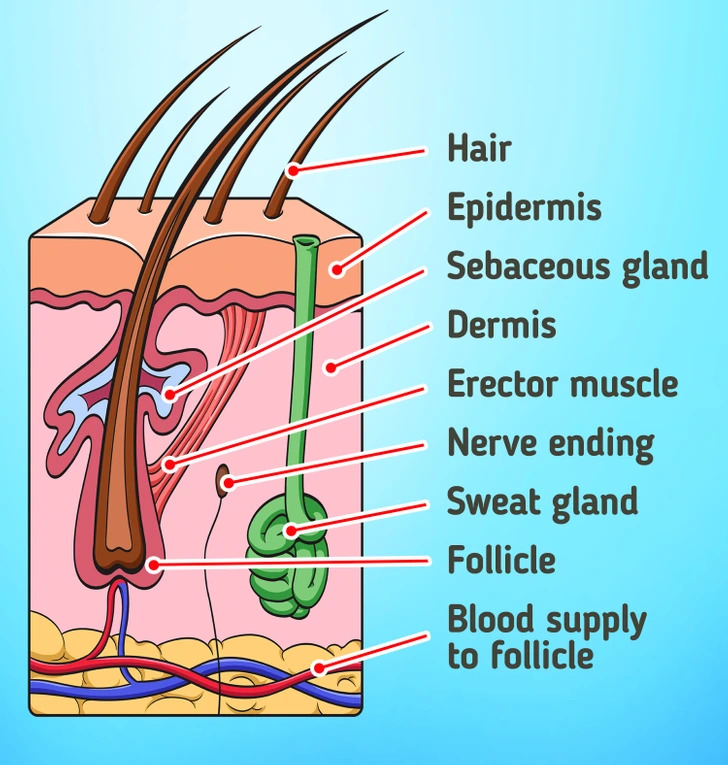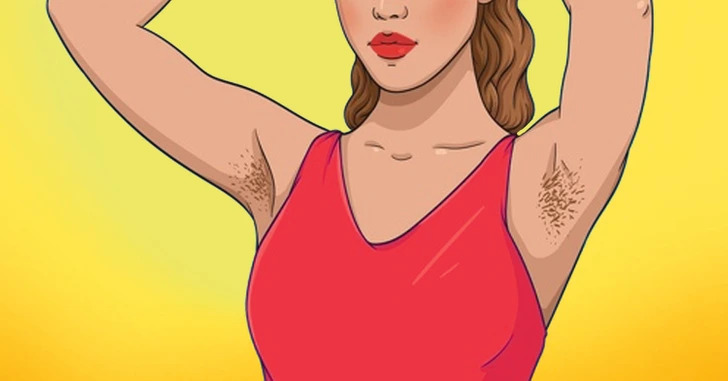Have you ever wondered why we even have hair on our bodies? Hair serves various functions, and in this article, we delve into the intriguing world of hair to discover its significance.
The Role of Hair Before we can unravel the mysteries of body hair, it’s essential to understand what hair is and why it exists.
Mammals possess an internal mechanism called thermoregulation, which allows the brain to regulate the body’s temperature. When we sweat, our internal organs cool down. However, for sweat to effectively cool us down, the hair covering our skin cannot be too thick. This is why we have relatively thin hair that fulfills this cooling function perfectly.

In the distant past, our ancestors were covered in much thicker hair, but approximately 2 to 3.3 million years ago, modern humans evolved to have less hair. In the image below, you can observe the inner and outer structure of the mammalian epidermis.
This structure consists of dead cells, sweat glands, and nerve endings. Sweat glands produce the oil that keeps our hair healthy, and the erector muscles can make our hair “stand up.” Made of keratin, hair grows from follicles attached to every hair on our skin. Hair acts as an efficient heat conductor, facilitating the regulation of temperature by allowing heat to enter and exit. Furthermore, it shields the skin from various harmful elements.
Over the course of evolution, our hair coats became thinner as our bodies adapted to hot climates and more active lifestyles. Some scientists argue that preserving heat became less critical compared to protecting ourselves from parasites.
Modern humans boast approximately 5 million hair follicles across their entire bodies. The location and structure of hair can vary depending on age and hormone levels. Hair on the head plays a crucial role in regulating the temperature of the brain.
Interestingly, curly hair is remarkably effective at protecting the scalp and brain from overheating while aiding in sweat evaporation. Thicker hair in the genital and armpit regions likely relates to sexual selection. The unique odorous chemicals produced by apocrine glands in these areas are individual to each person and may play a role in attracting potential partners, similar to pheromones in animals.
Even seemingly invisible hair serves an essential purpose by aiding in skin restoration and acting as storage for stem cells.
A Brief History of Hair Removal

If body hair is so vital, why have humans sought to remove it? To find the answer, we must journey back to ancient times when hair removal held various social and cultural meanings. Initially, people removed hair primarily for hygiene purposes, aiming to keep their bodies clean. The first copper razors were employed for this purpose in ancient Egypt and India.
During Cleopatra’s era, individuals used a mixture of sugar for hair removal, while Roman women utilized tweezers and other methods.
One theory behind the desire for hair removal emerged after the publication of Charles Darwin’s “The Descent of Man” in 1871. According to the theory of natural selection, humans discard unnecessary traits, and thick body hair is considered non-essential.

The push for hair removal gained momentum thanks to the fashion industry, magazines, razor companies, and various other commercial interests. Wax epilation, which made its debut in a US salon in 1987, turned body hair on women into a societal taboo.
Should We Remove Body Hair? In an era where maintaining bodily hygiene has become more accessible, the decision to remove body hair ultimately boils down to personal preference. However, it’s essential to consider a few factors:
Shaving and hair removal can lead to issues such as ingrown hair, skin irritation, infections, and trauma. So, while the choice is yours, it’s wise to weigh the pros and cons before deciding whether to embrace or bid farewell to your body hair.








